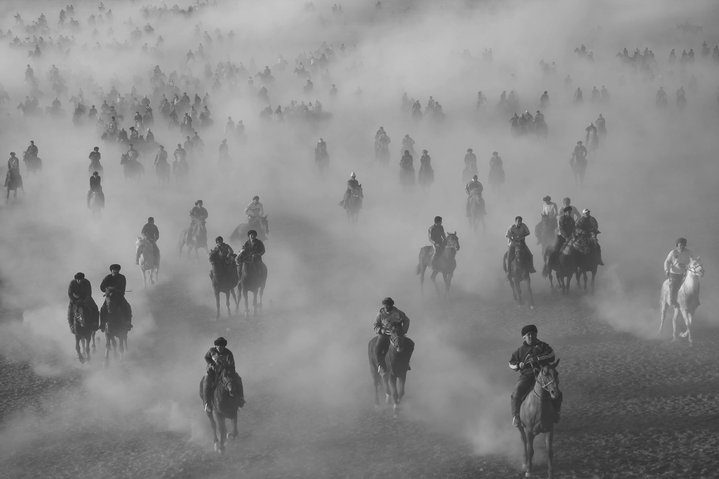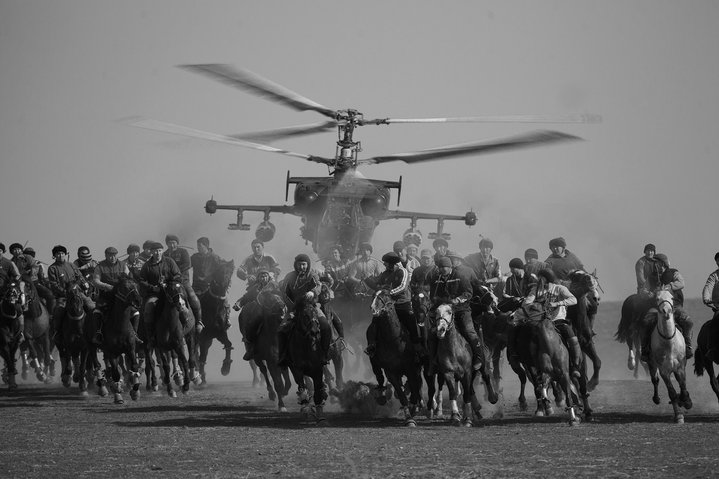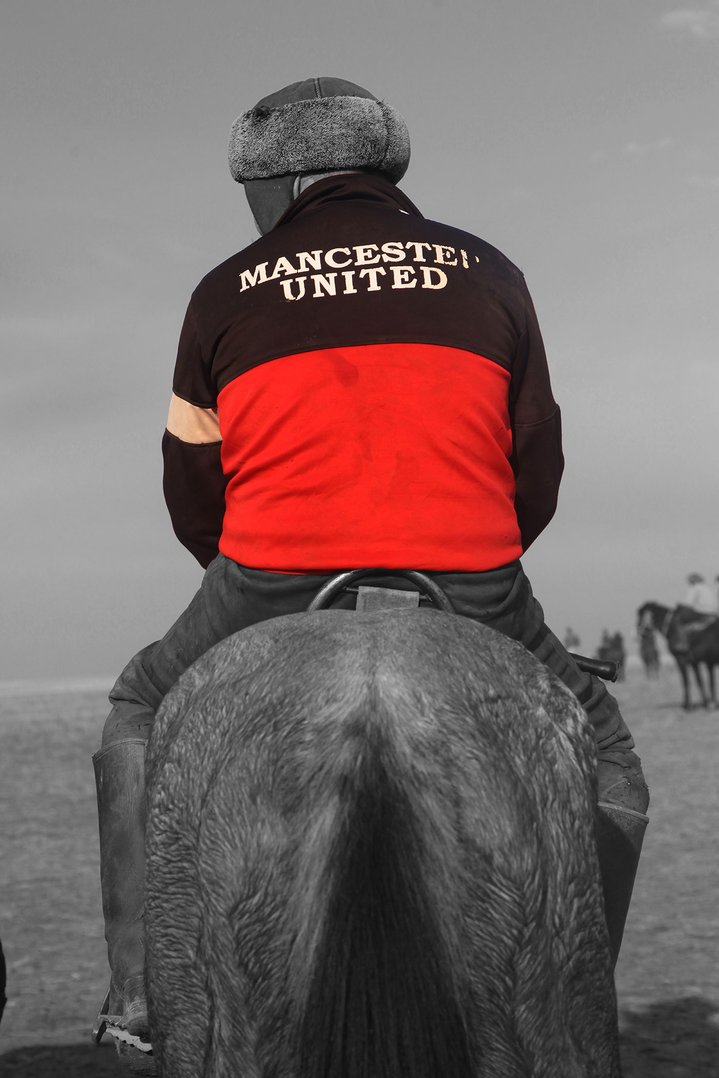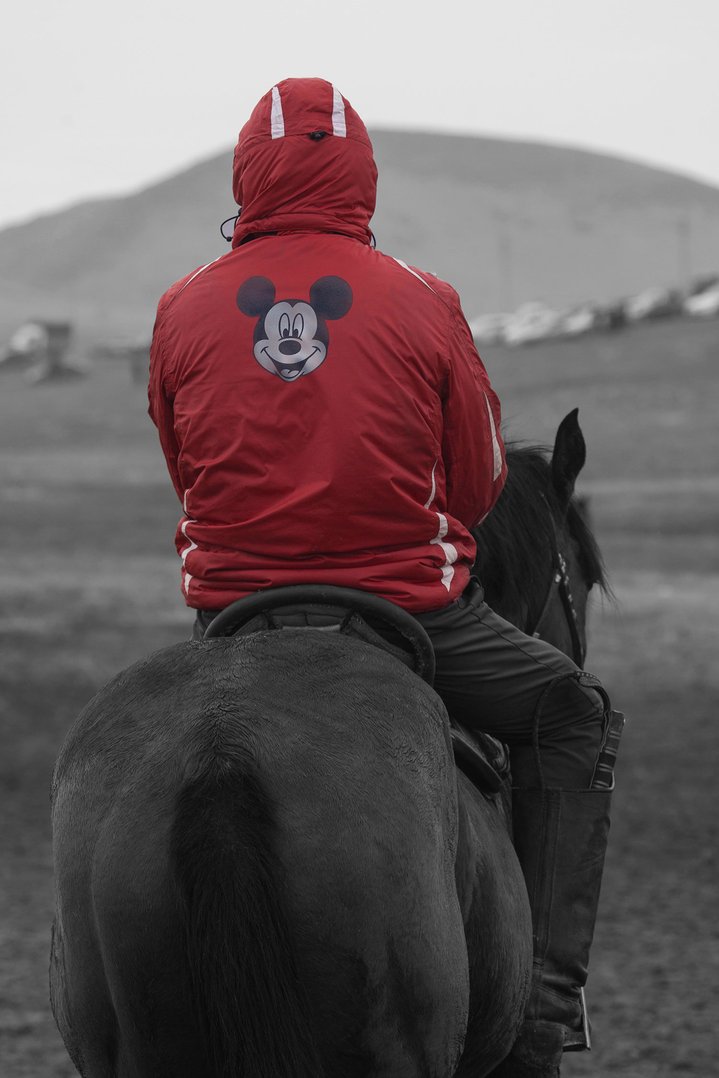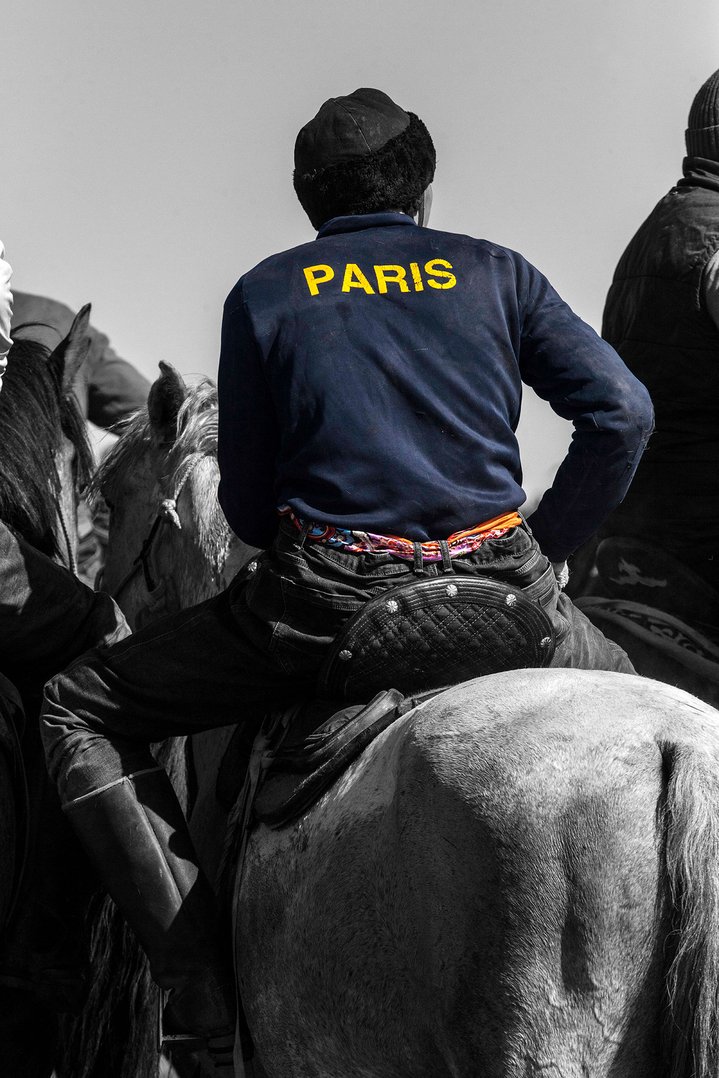Said Atabekov. Steppe Wolves, 2014. 132x98 cm. Courtesy Laura Bulian Gallery, Milan.
Said Atabekov and the art of kokpar
A Kazakh multi-media artist brings the vibes of Central Asia to Switzerland. In his project ‘Steppe Wolves’, now on display in Bern, he turned an ancient horse game from his native land into a caustic metaphor for the ways and means of today’s globalised world.
Despite the close historical and cultural connections between Russia and Central Asia, artists from across the region are practically unknown in the Russian art landscape. They are rarely invited to exhibit in Russia, although there are a few exceptions. For example, Kazakh artist Saule Suleimenova (b.1970) took part in the ‘Trash Art’ exhibition in Moscow in October 2020, Uzbek artist Babur Ismailov (b.1973) exhibited his works in Irkutsk in March 2020 within the framework of the ‘Horizon of Illusions’. This situation is not mirrored in the West, where they are more present, with representatives of contemporary art from Central Asia actively taking part in international biennales, showing their art in solo exhibitions and museums are interested in acquiring these works.
Recently, the solo exhibition of Said Atabekov (b.1965), an established Kazakh artist with a multi-media practice spanning installation, performance, video art and photography, opened in Bern. Curated by Aigul Ibraeva, it presents a series of works under the name of ‘Steppe Wolves’ created around a traditional horse game called ‘Kokpar’. This popular game in Central Asia tells much about the world around us. As Said Atabekov comments: “The traditional game Kokpar is very popular among the nomads of Central Asia. The game itself embodies the image of our modern world, which is governed by fierce competition. When you watch this game, the participants are fighting for a goat carcass; several thousand riders converge over a special playing field in the steppe - it looks like a battle. They struggle to find the best place under the sun, because in space even dust is trying to find its place: in a natural disaster, a devastating flood, a rapid whirlpool, or volcanic lava. Who will be rewarded with luck is decided by an invisible Heavenly Judge.”
Kazakh artist Said Atabekov was born in Uzbekistan and is one of the key figures in Central Asian contemporary art; he exhibited in Moscow back in 2015 in Artwin gallery. Last year, several of his artworks from Russian gallerist Marat Guelman's private collection were given to the Tretyakov Gallery in Moscow, along with other Kazakh artists, such as Yerbosyn Meldibekov (b. 1964) and Kanat Ibragimov (b. 1964). Altogether, the works of Kazakh masters show the new spectrum of contemporary art from a part of the world little known on the outside. Maybe it is time for Moscow art curators and galleries to focus their attention on art from Central Asia?






